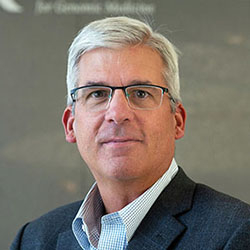The Jackson Laboratory receives $8 million in federal funding to expand research capacity in rare diseases
Featured Article | April 4, 2024
The funding will support construction of a dedicated facility for rare disease research, marking the first expansion of the Bar Harbor research footprint in seven years.
U.S. Senators Susan Collins and Angus King announced on March 26 that $8 million will be invested in The Jackson Laboratory (JAX), to support the construction of a unique and modern facility dedicated to enhancing JAX’s capacity to develop potential new therapies for people living with rare diseases. The facility will be located on JAX’s Bar Harbor campus and support its existing Rare Disease Translational Center.
This congressionally directed funding serves as a stimulus to the institutional investment from JAX to support the development of the new building and will serve as a catalyst to accelerate JAX research in rare diseases – a worldwide public health issue. Together, these investments from JAX and Congress enable the first expansion of the Bar Harbor research footprint since the 2016 construction of the Center for Biometric Analysis.
“This vital funding ensures that the Rare Disease Translational Center can continue impactful research for individuals affected by rare diseases worldwide, right here in Maine,” said Cat Lutz, Ph.D., MBA, vice president of the Rare Disease Translational Center at The Jackson Laboratory. “With this support, we can expand our team and research capabilities, ensuring more patients receive a streamlined journey from diagnosis to therapy.”
Currently, the RDTC is working with nearly 50 collaborators across the United States, United Kingdom, Australia, and Canada, has 100+ ongoing projects in its pipeline, and has created over 60 novel mouse models to study rare diseases, including multiple sulfatase deficiency, spinal muscular atrophy, Rett syndrome, charcot-marie-tooth and others. The added space for the center not only provides much-needed capacity to conduct this work and expand upon it, but also creates more than 60 new jobs from entry-level positions to senior-level roles.
“We are incredibly grateful to Senators Collins and King for making this funding possible, which allows us to significantly scale up the impactful projects underway at the Rare Disease Translational Center,” said JAX President and CEO Lon Cardon, Ph.D., FMedSci. “Our objective is to accelerate research discoveries that lead to effective therapies in the clinic. The expanded RDTC will have an essential role in building broad expertise in translational research at JAX.”
When complete, the center will include approximately 16,000 square feet of modern laboratory space, and areas for shared scientific equipment, collaboration, and focused work.
Members of the rare disease community spoke in strong support of the RDTC project, including Nina Frost, founder of Hope for Annabel, an organization that is working with the RDTC to identify potential treatments for alternating hemiplegia of childhood.
“It is vitally important that centers like the RDTC have the infrastructure necessary to support the rare disease patient community,” said Frost. “I’m pleased to see that this funding was approved in order for patient-based research and therapeutics to be rapidly evaluated at scale, providing hope for the treatment of rare genetic diseases.”


